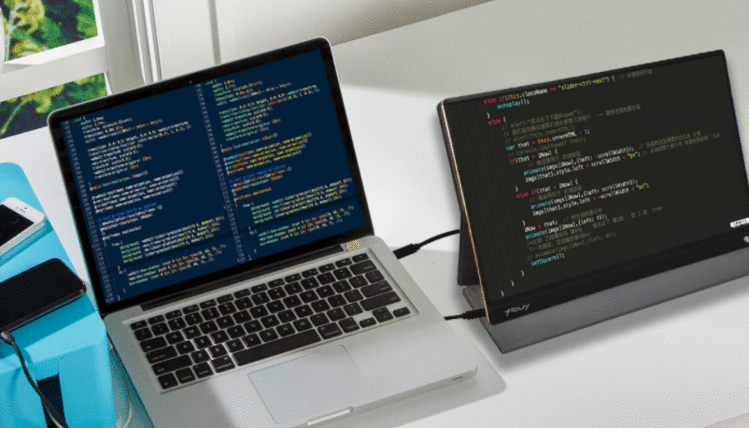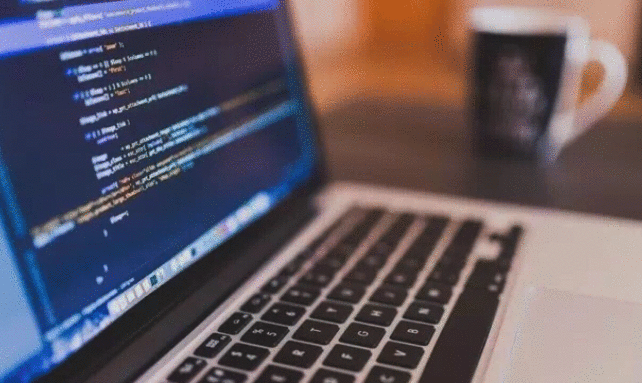我现在试图这样做几天,在阅读了大量试图这样做的人的消息之后,我仍然无法UITextField在我的一些人中完全工作UITableViewCells,就像在这个例子中一样:

要么我的表单工作,但文本不可见(虽然我将其颜色设置为蓝色),当我点击它时键盘在场上,我无法正确实现键盘事件.我尝试了一些来自Apple的例子(主要是UICatalog,有一个类似的控件),但它仍然无法正常工作.
有人可以帮我(和所有的人试图实现这种控制)和后一个简单实现的UITextField一个UITableViewCell,工作正常?
试试吧.对我来说就像一个魅力(在iPhone设备上).我将此代码用于登录屏幕一次.我将表视图配置为包含两个部分.你当然可以摆脱部分条件.
- (UITableViewCell *)tableView:(UITableView *)tableView cellForRowAtIndexPath:(NSIndexPath *)indexPath {
UITableViewCell *cell = [self.tableView dequeueReusableCellWithIdentifier:kCellIdentifier];
if (cell == nil) {
cell = [[[UITableViewCell alloc] initWithStyle:UITableViewCellStyleDefault
reuseIdentifier:kCellIdentifier] autorelease];
cell.accessoryType = UITableViewCellAccessoryNone;
if ([indexPath section] == 0) {
UITextField *playerTextField = [[UITextField alloc] initWithFrame:CGRectMake(110, 10, 185, 30)];
playerTextField.adjustsFontSizeToFitWidth = YES;
playerTextField.textColor = [UIColor blackColor];
if ([indexPath row] == 0) {
playerTextField.placeholder = @"example@gmail.com";
playerTextField.keyboardType = UIKeyboardTypeEmailAddress;
playerTextField.returnKeyType = UIReturnKeyNext;
}
else {
playerTextField.placeholder = @"Required";
playerTextField.keyboardType = UIKeyboardTypeDefault;
playerTextField.returnKeyType = UIReturnKeyDone;
playerTextField.secureTextEntry = YES;
}
playerTextField.backgroundColor = [UIColor whiteColor];
playerTextField.autocorrectionType = UITextAutocorrectionTypeNo; // no auto correction support
playerTextField.autocapitalizationType = UITextAutocapitalizationTypeNone; // no auto capitalization support
playerTextField.textAlignment = UITextAlignmentLeft;
playerTextField.tag = 0;
//playerTextField.delegate = self;
playerTextField.clearButtonMode = UITextFieldViewModeNever; // no clear 'x' button to the right
[playerTextField setEnabled: YES];
[cell.contentView addSubview:playerTextField];
[playerTextField release];
}
}
if ([indexPath section] == 0) { // Email & Password Section
if ([indexPath row] == 0) { // Email
cell.textLabel.text = @"Email";
}
else {
cell.textLabel.text = @"Password";
}
}
else { // Login button section
cell.textLabel.text = @"Log in";
}
return cell;
}
结果如下所示:

这是一个在iOS6/7/8/9下看起来不错的解决方案.
更新2016-06-10:这仍适用于iOS 9.3.3
感谢您的支持,现在可以通过https://github.com/fulldecent/FDTextFieldTableViewCell访问CocoaPods/Carthage/SPM
基本上我们把库存UITableViewCellStyleValue1和主食UITextField放在detailTextLabel应该的位置.这为我们提供了所有场景的自动放置:iOS6/7/8/9,iPhone/iPad,图像/无图像,附件/无附件,纵向/横向,1x/2x/3x.

注意:这是使用故事板与UITableViewCellStyleValue1名为"word" 的类型单元格.
- (UITableViewCell *)tableView:(UITableView *)tableView cellForRowAtIndexPath:(NSIndexPath *)indexPath
{
cell = [tableView dequeueReusableCellWithIdentifier:@"word"];
cell.detailTextLabel.hidden = YES;
[[cell viewWithTag:3] removeFromSuperview];
textField = [[UITextField alloc] init];
textField.tag = 3;
textField.translatesAutoresizingMaskIntoConstraints = NO;
[cell.contentView addSubview:textField];
[cell addConstraint:[NSLayoutConstraint constraintWithItem:textField attribute:NSLayoutAttributeLeading relatedBy:NSLayoutRelationEqual toItem:cell.textLabel attribute:NSLayoutAttributeTrailing multiplier:1 constant:8]];
[cell addConstraint:[NSLayoutConstraint constraintWithItem:textField attribute:NSLayoutAttributeTop relatedBy:NSLayoutRelationEqual toItem:cell.contentView attribute:NSLayoutAttributeTop multiplier:1 constant:8]];
[cell addConstraint:[NSLayoutConstraint constraintWithItem:textField attribute:NSLayoutAttributeBottom relatedBy:NSLayoutRelationEqual toItem:cell.contentView attribute:NSLayoutAttributeBottom multiplier:1 constant:-8]];
[cell addConstraint:[NSLayoutConstraint constraintWithItem:textField attribute:NSLayoutAttributeTrailing relatedBy:NSLayoutRelationEqual toItem:cell.detailTextLabel attribute:NSLayoutAttributeTrailing multiplier:1 constant:0]];
textField.textAlignment = NSTextAlignmentRight;
textField.delegate = self;
return cell;
}
以下是我如何实现这一目标:
TextFormCell.h
#import#define CellTextFieldWidth 90.0 #define MarginBetweenControls 20.0 @interface TextFormCell : UITableViewCell { UITextField *textField; } @property (nonatomic, retain) UITextField *textField; @end
TextFormCell.m
#import "TextFormCell.h"
@implementation TextFormCell
@synthesize textField;
- (id)initWithReuseIdentifier:(NSString *)reuseIdentifier {
if (self = [super initWithReuseIdentifier:reuseIdentifier]) {
// Adding the text field
textField = [[UITextField alloc] initWithFrame:CGRectZero];
textField.clearsOnBeginEditing = NO;
textField.textAlignment = UITextAlignmentRight;
textField.returnKeyType = UIReturnKeyDone;
[self.contentView addSubview:textField];
}
return self;
}
- (void)dealloc {
[textField release];
[super dealloc];
}
#pragma mark -
#pragma mark Laying out subviews
- (void)layoutSubviews {
CGRect rect = CGRectMake(self.contentView.bounds.size.width - 5.0,
12.0,
-CellTextFieldWidth,
25.0);
[textField setFrame:rect];
CGRect rect2 = CGRectMake(MarginBetweenControls,
12.0,
self.contentView.bounds.size.width - CellTextFieldWidth - MarginBetweenControls,
25.0);
UILabel *theTextLabel = (UILabel *)[self textLabel];
[theTextLabel setFrame:rect2];
}
它可能看起来有点冗长,但它的确有效!
别忘了设置代表!
试试这个吧.它也可以处理滚动,您可以重复使用单元格,而无需删除之前添加的子视图.
- (NSInteger)tableView:(UITableView *)table numberOfRowsInSection:(NSInteger)section{
return 10;
}
- (UITableViewCell *)tableView:(UITableView *)table cellForRowAtIndexPath:(NSIndexPath *)indexPath {
UITableViewCell *cell = [table dequeueReusableCellWithIdentifier:@"Cell"];
if( cell == nil)
cell = [[[UITableViewCell alloc] initWithStyle:UITableViewCellStyleDefault reuseIdentifier:@"Cell"] autorelease];
cell.textLabel.text = [[NSArray arrayWithObjects:@"First",@"Second",@"Third",@"Forth",@"Fifth",@"Sixth",@"Seventh",@"Eighth",@"Nineth",@"Tenth",nil]
objectAtIndex:indexPath.row];
if (indexPath.row % 2) {
UITextField *textField = [[UITextField alloc] initWithFrame:CGRectMake(0, 0, 200, 21)];
textField.placeholder = @"Enter Text";
textField.text = [inputTexts objectAtIndex:indexPath.row/2];
textField.tag = indexPath.row/2;
textField.delegate = self;
cell.accessoryView = textField;
[textField release];
} else
cell.accessoryView = nil;
cell.selectionStyle = UITableViewCellSelectionStyleNone;
return cell;
}
- (BOOL)textFieldShouldEndEditing:(UITextField *)textField {
[inputTexts replaceObjectAtIndex:textField.tag withObject:textField.text];
return YES;
}
- (void)viewDidLoad {
inputTexts = [[NSMutableArray alloc] initWithObjects:@"",@"",@"",@"",@"",nil];
[super viewDidLoad];
}
这应该不难.为表创建单元格时,将UITextField对象添加到单元格的内容视图中
UITextField *txtField = [[UITextField alloc] initWithFrame....] ... [cell.contentView addSubview:txtField]
将UITextField的委托设置为self(即viewcontroller)为文本字段指定标记,以便您可以识别在委托方法中编辑的文本字段.当用户点击文本字段时,键盘应弹出.我让它像这样工作.希望能帮助到你.
[cell.contentView bringSubviewToFront:textField]每次我的细胞出现时,我都会通过调用一种方法来避免这种情况,但后来我发现了这种相对简单的技术:
cell.accessoryView = textField;
似乎没有相同的背景覆盖问题,并且它自己(有点)对齐.此外,textLabel自动截断以避免溢出(或在其下),这很方便.
Xcode 8.2.1,Swift 3
在UITableViewCell中创建UITextField并将UITextField编辑功能委托给ViewController
class ViewController
import UIKit
protocol TextFieldInTableViewCellDelegate: class {
func textField(editingDidBeginIn cell:TextFieldInTableViewCell)
func textField(editingChangedInTextField newText: String, in cell: TextFieldInTableViewCell)
}
class TextFieldInTableViewCell: UITableViewCell {
private(set) weak var textField: UITextField?
private(set) weak var descriptionLabel: UILabel?
weak var delegate: TextFieldInTableViewCellDelegate?
override init(style: UITableViewCell.CellStyle, reuseIdentifier: String?) {
super.init(style: style, reuseIdentifier: reuseIdentifier)
setupSubviews()
}
private func setupSubviews() {
let stackView = UIStackView()
stackView.distribution = .fill
stackView.alignment = .leading
stackView.spacing = 8
contentView.addSubview(stackView)
stackView.translatesAutoresizingMaskIntoConstraints = false
stackView.topAnchor.constraint(equalTo: topAnchor, constant: 6).isActive = true
stackView.bottomAnchor.constraint(equalTo: bottomAnchor, constant: -6).isActive = true
stackView.leftAnchor.constraint(equalTo: leftAnchor, constant: 16).isActive = true
stackView.rightAnchor.constraint(equalTo: rightAnchor, constant: -16).isActive = true
let label = UILabel()
label.text = "Label"
stackView.addArrangedSubview(label)
descriptionLabel = label
let textField = UITextField()
textField.textAlignment = .left
textField.placeholder = "enter text"
textField.setContentHuggingPriority(.fittingSizeLevel, for: .horizontal)
stackView.addArrangedSubview(textField)
textField.addTarget(self, action: #selector(textFieldValueChanged(_:)), for: .editingChanged)
textField.addTarget(self, action: #selector(editingDidBegin), for: .editingDidBegin)
self.textField = textField
stackView.layoutSubviews()
selectionStyle = .none
let gesture = UITapGestureRecognizer(target: self, action: #selector(didSelectCell))
addGestureRecognizer(gesture)
}
required init?(coder aDecoder: NSCoder) { super.init(coder: aDecoder) }
}
extension TextFieldInTableViewCell {
@objc func didSelectCell() { textField?.becomeFirstResponder() }
@objc func editingDidBegin() { delegate?.textField(editingDidBeginIn: self) }
@objc func textFieldValueChanged(_ sender: UITextField) {
if let text = sender.text { delegate?.textField(editingChangedInTextField: text, in: self) }
}
}
class TextFieldInTableViewCell
import UIKit
class ViewController: UIViewController {
private weak var tableView: UITableView?
override func viewDidLoad() {
super.viewDidLoad()
setupTableView()
}
}
extension ViewController {
func setupTableView() {
let tableView = UITableView(frame: .zero)
tableView.register(TextFieldInTableViewCell.self, forCellReuseIdentifier: "TextFieldInTableViewCell")
view.addSubview(tableView)
tableView.translatesAutoresizingMaskIntoConstraints = false
tableView.topAnchor.constraint(equalTo: view.topAnchor).isActive = true
tableView.bottomAnchor.constraint(equalTo: view.bottomAnchor).isActive = true
tableView.leftAnchor.constraint(equalTo: view.leftAnchor).isActive = true
tableView.rightAnchor.constraint(equalTo: view.rightAnchor).isActive = true
tableView.rowHeight = UITableView.automaticDimension
tableView.estimatedRowHeight = UITableView.automaticDimension
tableView.tableFooterView = UIView()
self.tableView = tableView
tableView.dataSource = self
let gesture = UITapGestureRecognizer(target: tableView, action: #selector(UITextView.endEditing(_:)))
tableView.addGestureRecognizer(gesture)
}
}
extension ViewController: UITableViewDataSource {
func numberOfSections(in tableView: UITableView) -> Int { return 1 }
func tableView(_ tableView: UITableView, numberOfRowsInSection section: Int) -> Int { return 2 }
func tableView(_ tableView: UITableView, cellForRowAt indexPath: IndexPath) -> UITableViewCell {
let cell = tableView.dequeueReusableCell(withIdentifier: "TextFieldInTableViewCell") as! TextFieldInTableViewCell
cell.delegate = self
return cell
}
}
extension ViewController: TextFieldInTableViewCellDelegate {
func textField(editingDidBeginIn cell: TextFieldInTableViewCell) {
if let indexPath = tableView?.indexPath(for: cell) {
print("textfield selected in cell at \(indexPath)")
}
}
func textField(editingChangedInTextField newText: String, in cell: TextFieldInTableViewCell) {
if let indexPath = tableView?.indexPath(for: cell) {
print("updated text in textfield in cell as \(indexPath), value = \"\(newText)\"")
}
}
}
协议TextFieldInTableViewCellDelegate
import UIKit
protocol TextFieldInTableViewCellDelegate: class {
func textField(editingDidBeginIn cell:TextFieldInTableViewCell)
func textField(editingChangedInTextField newText: String, in cell: TextFieldInTableViewCell)
}
class TextFieldInTableViewCell: UITableViewCell {
private(set) weak var textField: UITextField?
private(set) weak var descriptionLabel: UILabel?
weak var delegate: TextFieldInTableViewCellDelegate?
override init(style: UITableViewCell.CellStyle, reuseIdentifier: String?) {
super.init(style: style, reuseIdentifier: reuseIdentifier)
setupSubviews()
}
private func setupSubviews() {
let stackView = UIStackView()
stackView.distribution = .fill
stackView.alignment = .leading
stackView.spacing = 8
contentView.addSubview(stackView)
stackView.translatesAutoresizingMaskIntoConstraints = false
stackView.topAnchor.constraint(equalTo: topAnchor, constant: 6).isActive = true
stackView.bottomAnchor.constraint(equalTo: bottomAnchor, constant: -6).isActive = true
stackView.leftAnchor.constraint(equalTo: leftAnchor, constant: 16).isActive = true
stackView.rightAnchor.constraint(equalTo: rightAnchor, constant: -16).isActive = true
let label = UILabel()
label.text = "Label"
stackView.addArrangedSubview(label)
descriptionLabel = label
let textField = UITextField()
textField.textAlignment = .left
textField.placeholder = "enter text"
textField.setContentHuggingPriority(.fittingSizeLevel, for: .horizontal)
stackView.addArrangedSubview(textField)
textField.addTarget(self, action: #selector(textFieldValueChanged(_:)), for: .editingChanged)
textField.addTarget(self, action: #selector(editingDidBegin), for: .editingDidBegin)
self.textField = textField
stackView.layoutSubviews()
selectionStyle = .none
let gesture = UITapGestureRecognizer(target: self, action: #selector(didSelectCell))
addGestureRecognizer(gesture)
}
required init?(coder aDecoder: NSCoder) { super.init(coder: aDecoder) }
}
extension TextFieldInTableViewCell {
@objc func didSelectCell() { textField?.becomeFirstResponder() }
@objc func editingDidBegin() { delegate?.textField(editingDidBeginIn: self) }
@objc func textFieldValueChanged(_ sender: UITextField) {
if let text = sender.text { delegate?.textField(editingChangedInTextField: text, in: self) }
}
}
Main.storyboard
import UIKit
class ViewController: UIViewController {
private weak var tableView: UITableView?
override func viewDidLoad() {
super.viewDidLoad()
setupTableView()
}
}
extension ViewController {
func setupTableView() {
let tableView = UITableView(frame: .zero)
tableView.register(TextFieldInTableViewCell.self, forCellReuseIdentifier: "TextFieldInTableViewCell")
view.addSubview(tableView)
tableView.translatesAutoresizingMaskIntoConstraints = false
tableView.topAnchor.constraint(equalTo: view.topAnchor).isActive = true
tableView.bottomAnchor.constraint(equalTo: view.bottomAnchor).isActive = true
tableView.leftAnchor.constraint(equalTo: view.leftAnchor).isActive = true
tableView.rightAnchor.constraint(equalTo: view.rightAnchor).isActive = true
tableView.rowHeight = UITableView.automaticDimension
tableView.estimatedRowHeight = UITableView.automaticDimension
tableView.tableFooterView = UIView()
self.tableView = tableView
tableView.dataSource = self
let gesture = UITapGestureRecognizer(target: tableView, action: #selector(UITextView.endEditing(_:)))
tableView.addGestureRecognizer(gesture)
}
}
extension ViewController: UITableViewDataSource {
func numberOfSections(in tableView: UITableView) -> Int { return 1 }
func tableView(_ tableView: UITableView, numberOfRowsInSection section: Int) -> Int { return 2 }
func tableView(_ tableView: UITableView, cellForRowAt indexPath: IndexPath) -> UITableViewCell {
let cell = tableView.dequeueReusableCell(withIdentifier: "TextFieldInTableViewCell") as! TextFieldInTableViewCell
cell.delegate = self
return cell
}
}
extension ViewController: TextFieldInTableViewCellDelegate {
func textField(editingDidBeginIn cell: TextFieldInTableViewCell) {
if let indexPath = tableView?.indexPath(for: cell) {
print("textfield selected in cell at \(indexPath)")
}
}
func textField(editingChangedInTextField newText: String, in cell: TextFieldInTableViewCell) {
if let indexPath = tableView?.indexPath(for: cell) {
print("updated text in textfield in cell as \(indexPath), value = \"\(newText)\"")
}
}
}


 京公网安备 11010802040832号 | 京ICP备19059560号-6
京公网安备 11010802040832号 | 京ICP备19059560号-6